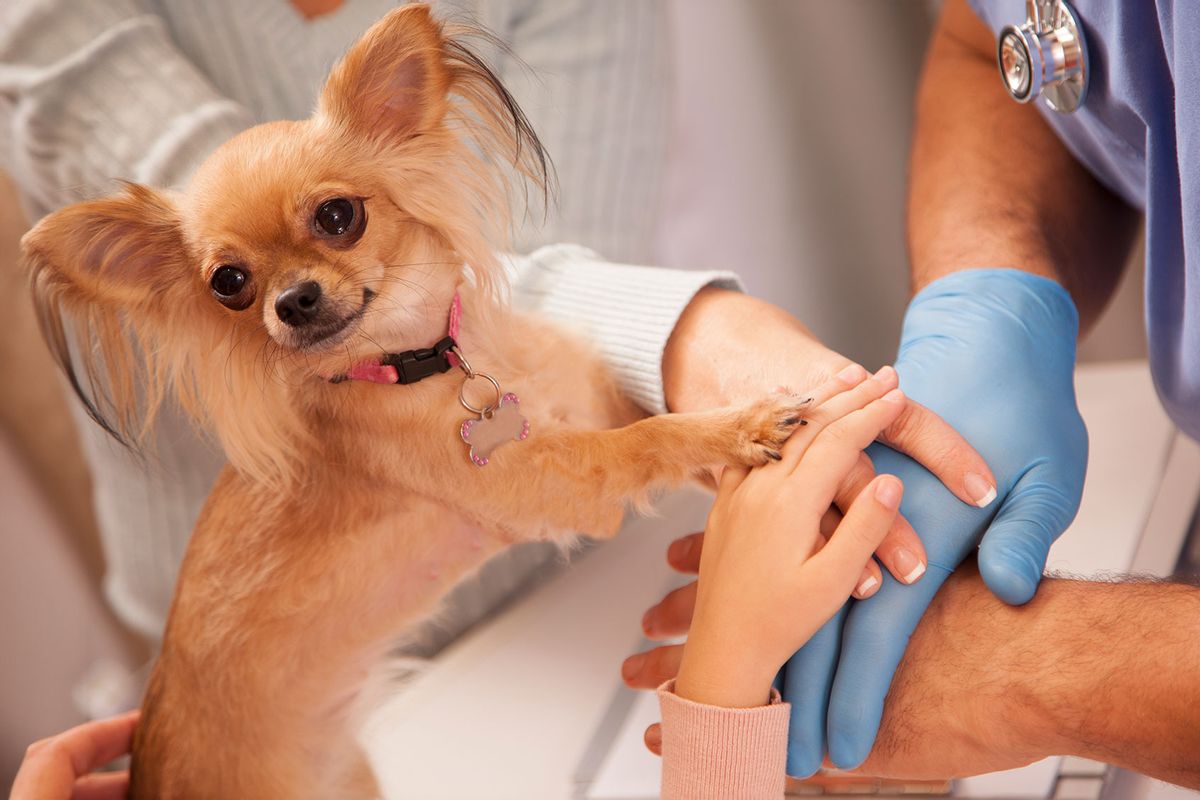Not every trend on TikTok is as horrific or annoying as drinking borax or pranking strangers — some memes are downright heartwarming. Take the so-called "hands in" challenge in which humans sit in a circle next to their dogs (and sometimes cats) and place their hands on top of each other, similar to how players on a sports team might initiate a "Go team!" cheer. In the best case scenarios — such as those chronicled by TikTok users (examples can be seen here and here) — the dog adds its paw on top of the humans' hands.
"It means nothing about how 'smart' a dog is or how much it loves/cares about its people/feels like part of the family."
People generally smile and cheer while the dogs look happy albeit confused — but it begs the question: do these pets really understand what's happening or are they just mimicking their human companions?
It's not entirely a trivial question, either and has interesting implications for canine intelligence, including the so-called theory of mind.
"The most plausible explanation is that the dogs who do this have already been trained to 'give paw or shake hands' and that they interpret the human gesture as a similar request," Dr. James Serpell, an animal behavior expert at the University of Pennsylvania, told Salon. "Several of them appear to think about it before responding, suggesting that they are a bit uncertain about the 'correct' response."
Dr. Catherine Reeve, a lecturer on animal welfare and behavior at Queen's University Belfast's School of Psychology, agreed that the likeliest explanation for the dogs' actions is that it's a learned behavior. Reeve observed that the dogs in the videos may see their humans holding their hands in a way similar to that which they associate with a cue, and then react accordingly.
"If they’ve learned how to give a paw, they might be more likely to give this behavior," Reeve said. "If they have not learned how to give a paw, they may not engage in the behavior. If they have learned a paw, but the way the people are holding their hands does not resemble the usual physical cue for 'give a paw,' the dog may not provide the behavior. Lastly, if a dog has a history of being punished for trying behaviors or for giving the wrong behavior, they may not provide or try this particular behavior."
In short, there are many possible things that could be going through a dog's head when the animal is faced with a "hands in" challenge. One thing that you should not assume, however, is that a dog does not love its owner or is not smart because it fails the "hands in" challenge.
"There’s many many reasons a dog may not provide this behavior," Reeve said. "It means nothing about how 'smart' a dog is or how much it loves or cares about its people or feels like part of the family."
If anything, the "hands-in" challenge provides animal behavioral scientists with a possible goal. According to Dr. Monique Udell, a professor at Oregon State University, the public interest in the "hands-in" challenge means that people in general are more interested in what is going on inside canine brains while they behave this way. The solution is to perform more research, as it is "hard to say for sure what is going on without doing controlled research" to test for things like whether a dog received previous training, Udell told Salon.
"We would have to know the learning history of the dog, and the number of attempts prior to the dog doing the behavior while being filmed to start making good predictions about why some dogs behave this way," Udell said.
Want more health and science stories in your inbox? Subscribe to Salon's weekly newsletter Lab Notes.
"Some dogs respond to this type of training much more quickly than others."
Serpell offered insights into how that research might occur. In fact, Serpell argues that there is a broad body of knowledge that already exists about how to train dogs to engage in precisely the types of behaviors seen in the "hands in" challenge videos.
"There is now a reasonably well-established new paradigm in dog-training called 'do-as-I-do' that is about training dogs to copy the actions or demonstrations of their owners or handlers," Serpell said. "Some dogs respond to this type of training much more quickly than others, suggesting that they may have more insight regarding their owners’ intentions, as well as a greater willingness to cooperate."
As Serpell put it, the dogs are almost always eager to please their owners — they just need guidelines on how to do so.
We need your help to stay independent
"Either way, the behavior is immediately reinforced (consciously or unconsciously) by the behavior of the owners," Serpell said. "Imitation is, after all, the sincerest form of flattery."
And if the dog simply does not want to put in its paw? As Reeve explained, this never reflects on anything serious like your dog's ability to understand you or whether it feels like a part of your family.
"For example, my dog does not like having his paws touched or held very much because he has a history of allergies that bother his paws, making them very sensitive," Reeve said. "He would not likely give this behavior. But my dog does 'shake a paw' by having me put a foot out and he puts his little paw on top of my foot. I bet if I did this same activity with my dog using feet instead of hands, I’d get a similar response."



Shares